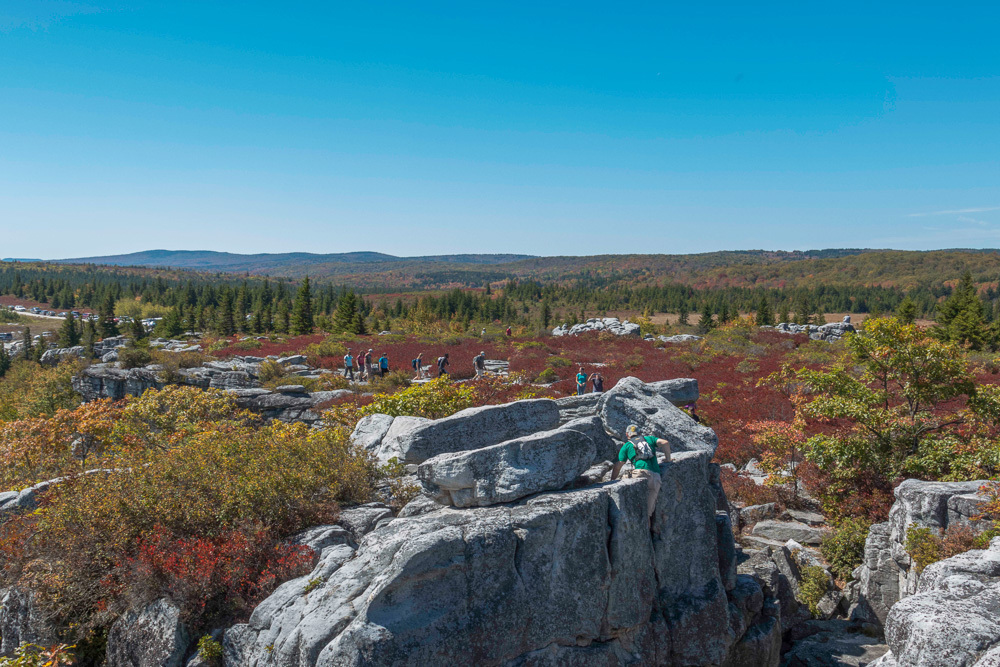Bird banding, biodiversity and bouldering — this fall, environmental sustainability majors and minors at Eastern Mennonite University enjoyed a field trip to one of the world’s most unique ecosystems, Dolly Sods Wilderness in West Virginia.
The alpine wilderness is the highest plateau east of the Mississippi River, with altitudes ranging from 2,655 feet to 4, 123 feet. The altitude and strong, consistent wind creates a system of flora and fauna— expanses of sphagnum and cranberry bogs, heath shrubs and red spruce — not often found south of Canada.

The human history of Dolly Sods includes massive logging, fires caused by flammable industrial waste, and then utilization as a mortar and artillery range.
“The area provides a unique opportunity to see the combined impacts of the extreme logging and unusual natural conditions that result in such a unique ecosystem and it inspires much discussion over the value of such places,” said Professor Jim Yoder, who has taken environmental sustainability students to Dolly Sods almost annually for over 15 years.
Yoder’s conservation biology class has been studying inherent and instrumental value of ecosystems, as well as current threats to biodiversity, including species extinction, habitat degradation, invasive species and over-exploitation of natural resources. Environmental policies, politics and organizations are also on the syllabus.
The students, including several Earthkeepers club members, began the day at the Allegheny Front Migration Observatory, the oldest continuously operating bird banding station in North America. The station, open since 1958, is operated by skilled volunteers who stay busy from dawn until dusk using and repairing capture nets, banding birds and recording data on populations and migration.
The data is important “to track the migration of birds across the United States,” said senior Cerrie Mendoza. “It helps provide researchers, scientists and the general public with migration patterns.”
Mendoza is familiar with the intricate process of data collection: she spent the summer involved with a genome research project in conjunction with the Smithsonian Institution’s National Museum of Natural History, the U. S. Geological Survey, Eastern Mennonite University and James Madison University. Rare salamanders were among the species she collected.
Besides the endemic Cheat Mountain salamander, many other species inhabit the region including hares, beavers, turkey, grouse, deer, foxes, black bears and bobcat. Before the logging era, elk, bison and mountain lion were present.
After the bird banding station visit, Yoder led the students around a beaver dam and on some trails to catalogue various unique plants.
Senior Abe Hartzler enjoyed watching Yoder “in his natural habitat … his excitement and passion is contagious. He’s very knowledgeable about plants and animals in the area and will point out all the interesting things around you. It makes hiking a far richer experience.”
The field trip ended with some bouldering and rock climbing on Bear Rocks, a scenic spot with beautiful views.
Portions of this article, written by Joshua Curtis, were published in the Sept. 28, 2017, Weather Vane.
